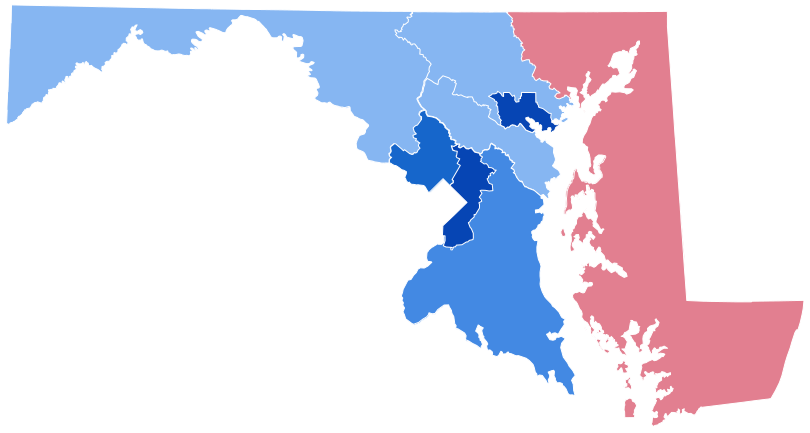Women’s Health Wins in This Election

Although the election of Trump as president represents an open threat to maternal health according to the statements in Project 2025, there were some wins for women’s health at the voting booths.
One major win for Maryland is the election of Angela Alsobrooks to the Senate. She has stated her position explicitly. She promised to co-sponsor the Women’s Health Protection Act, which would reinstate a nationwide right to abortion care by codifying Roe v. Wade. Even more strongly, she declares she will oppose any judicial nominee who does not support abortion rights. She firmly believes Congress and the Supreme Court should respect women’s health care decisions and leave them to be made between women and their doctors.
Maryland also is a winner for passing a ballot measure to add the right to abortion into the state constitution. Six other states did the same: Arizona, Colorado, Missouri, Montana, New York, and Nevada.
The National Law Review stated, “In Colorado, Maryland, New York, and Nevada, abortion was already protected under state law, so the ballot measures did not change what employers and health insurers will need to do to comply with the law. However, the ballot measures enshrined the right to abortion in those state constitutions, so it will be harder for future lawmakers to revoke these protections in the future.”
Similar ballot measures failed in three states: Florida, Nebraska, and South Dakota.
Maryland’s measure states that every person “has the fundamental right to reproductive freedom, including but not limited to the ability to make and effectuate decisions to prevent, continue, or end one’s pregnancy. The state may not, directly or indirectly, deny, burden, or abridge the right unless justified by a compelling state interest achieved by the least restrictive means.”
Ironically, Amanda Marcotte in Salon noted that “In state after state, voters backed both Trump and ballot initiatives that advanced and protected progressive goals.”
Fortunately, many organizations have reaffirmed their intention to continue to fight for women’s health. Moms Rising, for example, affirms its dedication to maternal health: “Focusing on equity in pregnancy, childbirth, and the period after childbirth, our organizing is built on understanding and lived experience of greater systemic issues mothers experience throughout motherhood due to race, class, and gender disparities. This work includes campaigns on maternal mortality/morbidity, as well as mass incarceration and police reform.”
According to the Centers for Disease Control and Prevention, the maternal mortality rate in the United States is 32.9 deaths per 100,000 live births. In 2021, 1,205 women died of maternal causes compared to 861 in 2020 and 754 in 2019.
That does not include all deaths occurring to pregnant or recently pregnant women. According to the American Medical Association, this spike in maternal deaths is the highest since 1965. The reasons are many. Dr. Sandra Fryhofer stated that “Black women are three times likelier than White women to die from a pregnancy-related cause. Health care access problems, underlying chronic conditions, and structural racism and implicit bias all contribute to these bleak statistics.
“Poor insurance coverage prior to, during, and after pregnancy; lack of interprofessional teams trained in best practices; and closure of maternity units in many rural and urban communities” are other factors that contribute to bad maternal outcomes according to the AMA. It recommends expanding access to medical and mental health care and social services for postpartum women.
The Commonwealth Fund wrote, “The United States continues to have the highest rate of maternal deaths of any high-income nation, despite a decline since the covid-19 pandemic. And within the U.S., the rate is by far the highest for Black women. Most of these deaths — over 80% — are likely preventable.”
In her recent book, Eve (2023), Cat Bohannon explores women’s health within the largest framework possible — the last 200 million years of human evolution. She explains that humans have relied on gynecological aid for millennia because giving birth is very risky. However, when well supported and cared for, women can give birth successfully to the future generations, that is, as long as they have special care before, during, and after birth.
According to the Commonwealth Fund, “Nearly two of three maternal deaths in the U.S. occur during the postpartum period, up to 42 days following birth. Compared to women in the other countries we studied, U.S. women are the least likely to have supports such as home visits and guaranteed paid leave during this critical time. The U.S. and Canada have the lowest supply of midwives and ob-gyns.”
Given that mothers shape the health and growth of new generations, a society needs to put special emphasis into promoting the health and education and social well-being of infants and children by their moms. That means supporting women. Countries that do this benefit economically on the national scale and those that don’t fall behind.
Racism and misogyny embedded in cultural practices, such as giving preference to males in detriment to females, to White people instead of to Black and Brown people, have long reaching deleterious effects. Egalitarianism has always been a human tendency that improves the chances of human survival.
Jeanette E. Sherbondy is a retired anthropology professor from Washington College and has lived here since 1986. In retirement she has been active with the Kent County Historical Society and Sumner Hall, one of the organizers of Legacy Day, and helped get highway /historical markers recognizing Henry Highland Garnet. She published an article on her ethnohistorical research of the free Black village, Morgnec.
Common Sense for the Eastern Shore







